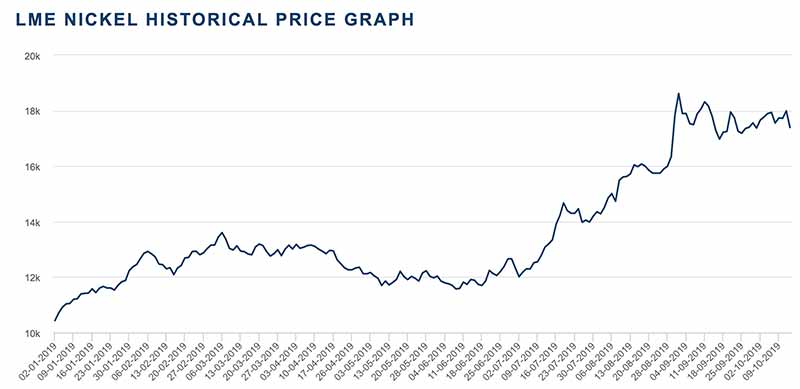Check it out: Nickel explorers are up 32% over the past three months

Pic: Tyler Stableford / Stone via Getty Images
As nickel prices surged, the big end of town — the major producers — made bank while ASX listed explorers struggled. But that’s starting to change.
Over the past 12 months share prices of nickel producers are up 37 per cent while nickel explorers are down 11 per cent, on average.
This is despite the nickel price increasing 75 per cent so far this year on the back of increasing demand from electric vehicle (EV) growth and a bigger than expected kick in stainless steel production.
Nickel stockpiles are falling, with the market further tightened with Indonesia’s September announcement that it will start the ban on nickel ore exports two years earlier than expected, PCF Capital’s Liam Twigger says.
“This move will take about 350,000 tonnes of nickel off global supply markets,” Twigger says.

READ: Carmakers, battery manufacturers are calling nickel companies direct as supply shortfall looms
But these macro factors have invariably helped the big producers over the more speculative exploration plays — something we’ve already seen play out in the gold space.
Twigger says junior nickel plays have been caught in the crossfire of a huge rush by retail investors into exchange traded funds (ETF’s) — which is basically just a basket of individual stocks.
But most juniors are just too small to be on the radar of an ETF or an index tracking fund, he says.
“As such, junior nickel explorers are completed avoided as an investment vehicle.”
But things have been looking up over the past few months.
“We note that retail investors might be waking from their slumber as Australia’s nickel explorers are up 32 per cent over the past 3 months on the back of renewed volume and interest — and no doubt more to come,” Twigger says.
Twigger also noted that a cashed-up crop of major producers would see “some fabulous opportunities for acquisitions, joint ventures and corporate deals” at the junior end of the pool.
NOW READ: S&P trims copper and zinc price forecasts, continues to favour gold
UNLOCK INSIGHTS
Discover the untold stories of emerging ASX stocks.
Daily news and expert analysis, it's free to subscribe.
By proceeding, you confirm you understand that we handle personal information in accordance with our Privacy Policy.








